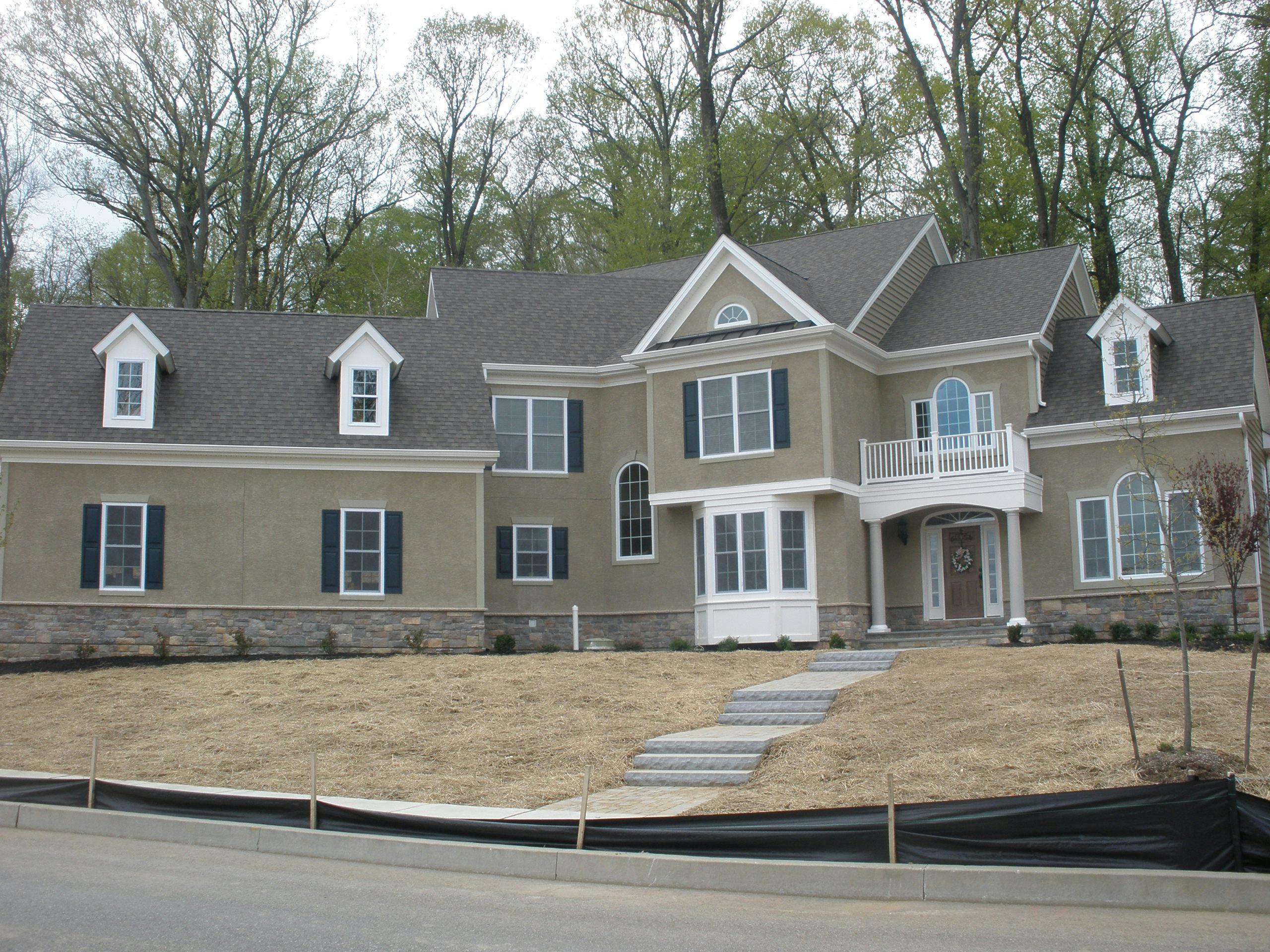
Stucco is one of the most popular exterior building materials due in part to both its durability and appearance. Additionally, most home and business owners opt to have their stucco painted rather than leaving the natural surface. This article will explain why stucco is typically painted, the types of paint that can be used on stucco surfaces, and the paint characteristics to be on the lookout for.
Why Paint Stucco?
There are two big reasons to paint stucco exteriors: Aesthetic appeal and increased durability. Aesthetic appeal is the obvious reason why many stucco homeowners opt to paint their exteriors. Like painting any other home exterior, painting stucco allows homeowners to add their own personality and style to their stucco installation.
Increasing the durability of your stucco installation through painting probably isn’t something you considered. The three main components of durability when it comes to painting on stucco are moisture protection, weather resistance, and viscosity.
Moisture protection is one of the most important aspects of stucco installations. If moisture gets behind the stucco and into the interior of the wall and doesn’t drain properly, it can lead to severe damage. The internal structure of the wall can be harmed with mold, mildew, and rot if this occurs. Paint coatings help to prevent this a small amount by preventing moisture from being absorbed through the stucco surface. Moisture can still get into the wall other ways, but eliminating this entry path is beneficial.
Paint also provides a level of weather resistance to the stucco installation. It protects against things that can damage stucco over time, such as rain, snow, heat, cold, and UV rays. It should be noted that paint isn’t going to insulate your home against heat and cold. Instead, it simply helps to prevent stucco from expanding and contracting due to changes in temperature.
The viscosity of the paint is important because the thicker the paint, the more protection it provides to the stucco surface. Thicker paint protects against moisture intrusion better and can also better protect the wall against damage such as scratches.
Types of Exterior Paint

The three main options when it comes to exterior paint for stucco are acrylic, elastomeric, and masonry. Each type of paint has its pros and cons, so you will want to consider which features are most important to you.
Acrylic paint is the most affordable option, but it doesn’t last as long as elastomeric or masonry paint. It also has the most color options, meaning you won’t have to settle for a color that isn’t exactly what you want. Further, the color penetrates deeper into the surface of the stucco than the other types of paint. This prevents moisture from getting beneath the paint and creating bubbles. However, this doesn’t mean that acrylic paint is good for waterproofing. Finally, while acrylic paint dries faster than the alternatives, it doesn’t bond to stucco surfaces as well, which is why it doesn’t last as long.
Elastomeric paint is the most expensive option. But to compensate for that, it’s the most water-resistant option, which means it provides excellent protection against moisture damage. Elastomeric paint is basically a liquified rubber that dries onto the surface of the wall. This means that it’s both thicker than the alternatives and also penetrates into the stucco surface the least. These characteristics can lead to the paint pulling away from the surface due to its weight — the more layers that are applied, the greater the threat. Additionally, the colors aren’t as vibrant and the paint can take multiple days to fully dry.
Masonry paint is the middle option in terms of pricing. It’s a very durable and moisture-resistant paint but comes in a more limited color selection. However, because it’s specifically designed to bond with masonry, like stucco, it lasts much longer than either acrylic or elastomeric paint when used for this purpose.
Paint Characteristics to Look For

Price and durability are often a trade-off. Less expensive paint generally needs to be reapplied more frequently and provides less protection against the environment. If you live by the water, it may be worth spending more for the increased water resistance of elastomeric paint. Otherwise, determining your optimal balance between the price and durability can help you choose between acrylic and masonry paint. Additionally, your first color choice may not be available with every type of paint, so that’s another factor to consider.
These paints also often come in multiple different sheen types. Flat, eggshell, gloss, satin, and semi-gloss may be available. However, in most cases, your best bet is to stick with a flat sheen. It doesn’t have the plastic appearance that gloss sheens do, and it brings out the natural texture of the stucco wall.
Lastly, keep in mind that not every paint type requires the same number of coats. The more coats that need to be applied, the more expensive it gets. And, additional coats add additional weight to the surface of the wall and increase drying time. This is more important to consider with elastomeric paint.
Conclusion
Painting stucco isn’t done just for looks. A coat (or a few) of paint helps to protect the surface of the stucco from moisture, weather, scratches, and cracks. In short, it helps keep your stucco walls lasting longer. There are also three types of paint that can be used on stucco: Acrylic, elastomeric, and masonry. They each have their pros and cons that should be weighed when making the decision. And, there are other paint characteristics that should be considered, such as the sheen type.
Friel Exteriors
Is your home or place of business in need of a new stucco exterior? Whether your old stucco installation has become damaged over the years, or you want to give your building a new look, we can help. Contact us today to learn more about our stucco remediation and installation processes, as well as the types of paint we recommend.




